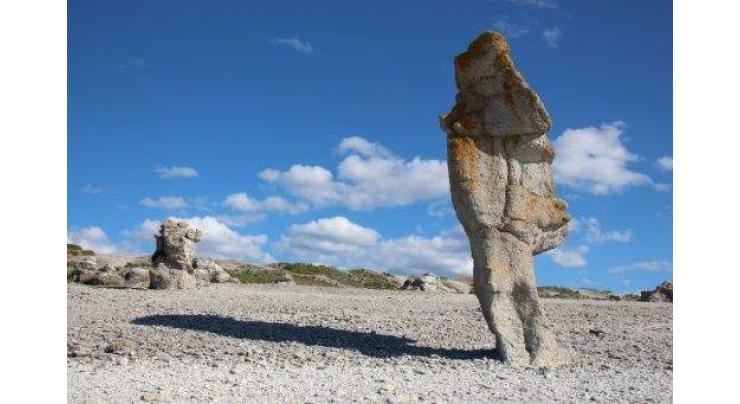
Bergman's Sanctuary Island Faro, A Site Of Pilgrimage For Fans
Mohammad Ali (@ChaudhryMAli88) Published July 11, 2018 | 02:40 PM

Endless winters, sparse pine trees rising from infertile soil, few sheep and even fewer people: the Baltic island of Faro is not only a natural film set for Ingmar Bergman, but his sanctuary and final resting place.
The Swedish filmmaker, who would have turned 100 on July 14, died on July 30, 2007.
Here on this stony island, where fishermen and peasants settled centuries ago, Bergman is buried next to his wife Ingrid von Rosen at a site which has turned into a place of pilgrimage for his admirers.
The director was already an internationally-acclaimed star when he explored Faro for the first time in 1960 while trying to find a location for "Through a Glass Darkly".
There he discovered the island's pebble beaches, distinctive rock formations, bogs and meagre pastures, its ports, church and lighthouse.
"It was love at first sight," he wrote on exploring Faro which lies just off the northern tip of Gotland, Sweden's largest island, and stretches 110 square kilometres (around 42 square miles).
Until 1998, Faro was off-limits to foreigners as a protected military zone.
"This is your landscape, Bergman. It corresponds to your innermost imaginings of forms, proportions, colours, horizons, sounds, silences, lights and reflections," he wrote in his autobiography, "The Magic Lantern".
After "Through a Glass Darkly", which won an Oscar in the best foreign language film category, Bergman filmed "Persona" (1966), "Shame" (1968), "The Passion of Anna" (1969) and "Scenes from a Marriage" (1973) on Faro.
He also made two documentaries, paying tribute to the workers he employed at his estate, who would also set up dolly rails for tracking shots and play extras. Some remember well the napalm fires set up to represent the horrors of war in "The Passion of Anna".
According to one piece of local lore, Bergman paid well, so well in fact that when visitors asked where his house was, loyal islanders would usually point in the opposite direction.
Related Topics
Recent Stories

Mired in crisis, Boeing reports another loss

Session Awarding Ceremony 2024 held at Cadet College Muzaffarabad

Austrian ski great Hirscher to make comeback under Dutch flag

Pakistan, Japan agrees to convene 'Economic Policy Dialogue'

FM Dar conveys deepest sympathy on torrential rains devastation in UAE

Spain PM Sanchez says weighing resignation after wife's graft probe

Tennis: ATP/WTA Madrid Open results - 1st update

Long-lost Klimt portrait auctioned off for 30 mn euros

Osaka seals first win on clay since 2022 in Madrid

Earthquake jolts Karachi

Sindh minister orders operation after attack on police in Ghotki

TikTok to fight US ban law in courts
More Stories From World
-
Football: English Championship table
28 minutes ago -
Time for 'democratic transition' in Venezuela: opposition candidate to AFP
48 minutes ago -
Spain's Pedro Sanchez : a risk-taker with a flair for survival
57 minutes ago -
Football: French Ligue 1 table
1 hour ago -
Nadal will only play French Open if he can 'compete well'
1 hour ago -
Ukraine, Israel, TikTok: the massive aid package before US Congress
1 hour ago
-
TikTok to fight US ban law in courts
2 hours ago -
Football: French Ligue 1 results
2 hours ago -

Spain PM Sanchez says weighing resignation after wife's graft probe
3 hours ago -

Long-lost Klimt portrait auctioned off for 30 mn euros
3 hours ago -

TikTok to fight US ban law in courts
3 hours ago -

Anger among Ukrainians in Poland as Kyiv halts passport renewals
3 hours ago



